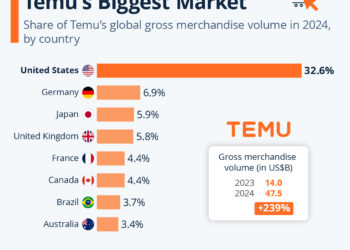Population Growth Trends in U.S. States for 2024
The latest data from the U.S. Census Bureau reveals a significant shift in population dynamics across the United States in 2024. After a challenging period marked by population declines in several states, most regions have managed to rebound and return to growth. This article delves into the latest trends, highlighting the states that have experienced growth and examining the factors at play.
Shifting Demographics: A Return to Growth
In a notable turnaround, only three states experienced population declines in 2024, a marked decrease from the eight states that saw shrinkage the previous year. This resurgence in population growth is encouraging, particularly after the profound impacts of the COVID-19 pandemic and the related disruption of typical migration patterns. Among the states that regained growth are some of the largest and economically robust states:
- California: Once facing stagnation and subsequent losses, California has shown resilience and returned to growth.
- Illinois: This state had been enduring a population decline since 2016 but is now experiencing a reversal in this trend.
- New York: Similar to Illinois, New York had been seeing its population dwindle since 2014, but recent trends suggest a potential rebound.
- Other states such as Hawaii, Oregon, Pennsylvania, and Louisiana also reported increased populations in the last year.
Factors Influencing Population Dynamics
Economic Resilience
The growth observed in states like California, Illinois, and New York can be attributed to their robust economies. These states host many opportunities which attract both domestic migrants and international newcomers. As economic stability rises, people are more inclined to move to areas offering job prospects and resources.
Changes in Immigration Policies
According to analyses from New York, recent changes in immigration enforcement under the Biden administration have played a significant role. The shifts have reopened avenues for many immigrants to settle in metropolitan hubs like New York City, which has a long-standing reputation as a welcoming destination for individuals from around the globe.
Domestic Migration Trends
Interestingly, domestic migration patterns have also contributed to the overall growth in populations. During the pandemic, many Americans opted to relocate from high-cost urban areas to more affordable regions. Though the initial wave of outbound migration has softened, the effects continue as people seek better living conditions.
The Role of International Immigration
International immigration remains a crucial factor driving population growth in states that had been experiencing declines. The Census Bureau noted a rich tapestry of immigration that now includes humanitarian migrants from countries such as Venezuela and Ukraine, with states like Illinois becoming sanctuaries for these newcomers.
Spotlight on Population Decline
Despite the overall growth, a few states have not mirrored this positive trend. West Virginia was the sole state that experienced a decline in both 2023 and 2024. Additionally, both Mississippi and Vermont have begun to lose population, highlighting that while most states are recovering, challenges persist in certain regions.
Economic Factors in Population Decline
For states facing ongoing population losses, economic factors significantly influence these trends. High living costs push residents to seek more affordable living options, while immigration patterns evolve, leading to a diversification of where people choose to settle within the U.S. Many international migrants are now gravitating towards the Sun Belt states and smaller cities that offer lower costs of living and new opportunities.
Conclusion
In summary, the population landscape in the United States has shifted notably in 2024, with most states returning to growth after a challenging period. Understanding the interplay between domestic migration, international immigration, and economic factors is crucial when analyzing these trends. As the country continues developing its demographic portrait, the implications of these changes are expected to unfold in the coming years.





